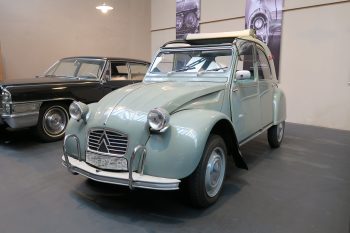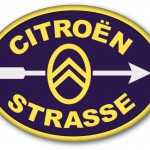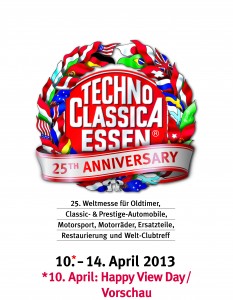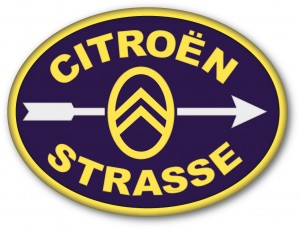
(english translation below)
Die Pressemitteilung der Autosan Classic:
Veränderte Rahmenbedingungen erforderten eine Überarbeitung der Schulnoten-basierten technischen Bewertung historischer Fahrzeuge. Ergänzt wird die nun vorliegende Neufassung des Bewertungsprinzips von einem aus zwölf Fahrzeugen bestehenden Beispielkatalog. Seitens der Versicherungswirtschaft war die Oldtimerversicherung autosan CLASSIC am Entstehen sowohl der Neufassung als auch des Beispielkatalogs maßgeblich beteiligt.
Bereits seit einigen Jahren erfahren Oldtimer im besonders originalen materiellen Zustand eine signifikant gestiegene Wertschätzung. In der Folge korrelieren Zustandsnoten und monetäre Werte nicht mehr automatisch. So erscheint es beispielsweise möglich, dass ein besonders original erhaltenes Fahrzeug im technischen Zustand 3 einen höheren Preis erzielt als ein vergleichbares, komplett renoviertes Note-1-Fahrzeug. In der Oldtimerszene führte das zu Irritationen und zu Forderungen nach alternativen Bewertungsprinzipien. Der Parlamentskreis Automobiles Kulturgut im Deutschen Bundestag (PAK) griff diese Forderungen auf und beauftragte eine interne Arbeitsgruppe mit der Suche nach einer alle beteiligten Kreise zufriedenstellenden Lösung.
Die nun vorliegende Neufassung des Bewertungsprinzips hält zum einen an den Schulnoten 5 bis 1 fest. Zum anderen wird empfohlen, im seltenen Fall eines besonders originalen materiellen Zustands diesen ausführlich in Wort und Bild darzustellen, hierfür das so genannte lange Gutachten zu nutzen und der Zustandsnote ein Ausrufezeichen folgen zu lassen. Letzteres als anfänglicher, äußerer Hinweis und als Anregung, sich näher mit dem Gutachten zu beschäftigen. Um Missverständnissen bezüglich des besonders originalen materiellen Zustands vorzubeugen, wird die Neufassung von einem Katalog mit zwölf Beispielfahrzeugen ergänzt. Enthalten sind vier Krafträder, sechs PKW, ein LKW und ein Traktor aus Baujahren zwischen 1914 und 1990.
Veröffentlicht werden Neufassung und Beispielkatalog als gemeinsames PDF-Dokument, hürdenfrei und kostenlos herunterladbar, primär auf den Websites der in der Arbeitsgruppe aktiven Unternehmen: Prüforganisation TÜV SÜD ClassiC, Marktbeobachter Classic Data, Restaurierungsbetrieb Omnia und Oldtimerversicherung autosan CLASSIC. Der Link zum Dokument auf der Ratgeber-Website der Oldtimerversicherung lautet www.autosanclassic.de/neufassung-bewertung.
sowie hier bei der Amicale:
Bewertung historischer Fahrzeuge – Anpassung mit Beispielkatalog (PDF, 9 MB)

Der Beispielkatalog zur Neufassung des Bewertungsprinzips enthält zwölf historische
Fahrzeuge unterschiedlicher Typen und Baujahre, u. a. diesen Citroën 2CV. Bildquelle: autosan CLASSIC/PAK
Hintergrund
autosan CLASSIC ist eine Marke des Risikoträgers Aioi Nissay Dowa Insurance Company of Europe SE, Niederlassung Deutschland. Bundesweit bekannt ist der Versicherer durch den Toyota Versicherungsdienst. Bei der Studienreihe AUTOHAUS VersicherungsMonitor, die vom Fachmedium AUTOHAUS der Verlagsgruppe Springer Nature durchgeführt wird, belegte der Toyota Versicherungsdienst in elf Jahren neunmal als Gesamtsieger den ersten Platz: 2009, 2010, 2013, 2014, 2015, 2016, 2017, 2018 und 2019.
Ansprechpartner für Journalisten
Oldtimerversicherung autosan CLASSIC
Peter Diehl, Referent für historische Fahrzeuge
Telefon 089/244474-108, Mobiltelefon 0172/8698205
Mail peter.diehl@autosanclassic.de
Website www.autosanclassic.de
Wir freuen uns, seitens der Amicale Citroën & DS Deutschland Peter Diehl in der Zusammenarbeit über den PAK mit haben unterstützen zu können – herzlichen Dank für die Wahl dieses in diesem Zustand selten zu findenden 2CV!
—–
The press release of German historic vehicle insurer “Autosan Classic”, translated and annotated (in brackets, “ann.:”) by Amicale. Please note that the mentioned vehicle condition grading system resp. this communication addresses the German market – in other countries it might be handled differently.
Technical evaluation of historic vehicles revised: still five “school-grade” levels, very rarely an additional “exclamation mark” indicator
Changed general conditions required a revision of the “school-grade” based technical evaluation and gradation of historic vehicles. The now available new version of the evaluation principle is supplemented by an example catalogue consisting of twelve vehicles. On the part of the insurance industry, the classic car insurance company autosan CLASSIC was significantly involved in the creation of both the new version and the example catalogue.
For some years now, classic cars in their particularly original material condition have been experiencing a significant increase in appreciation. As a result, condition ratings and monetary values no longer correlate automatically. It seems possible, for example, that a vehicle in technical condition 3 (ann.: average condition, German graduation system is from “1 = excellent” to “5 = bad condition”) that is in particularly original condition will fetch a higher price than a comparable, completely renovated grade 1 (ann.: excellent condition) vehicle.
In the classic car scene, this has led to irritations and demands for alternative valuation principles. The German government’s “Parlamentskreis Automobiles Kulturgut im Deutschen Bundestag (PAK)” (ann.: German parliamentary body for the preservation of the automotive heritage) took up these demands and commissioned a working group to find a solution that satisfied all parties involved.
The new version of the evaluation principle now available adheres to the “school grades” 5 (ann.: bad) to 1 (ann.: excellent). On the other hand, in the rare case of a particularly original material condition, it is recommended that this be described in detail in words and pictures, that the so-called long expert opinion be used and that the condition grade be followed by an exclamation mark “!”.
The latter as an initial, external reference and as a suggestion to take a closer look at the expert opinion. In order to prevent misunderstandings regarding the particularly original material condition, the new version is supplemented by a catalogue with twelve sample vehicles. Included are four motorcycles, six cars, one truck and one tractor built between 1914 and 1990. (ann: one vehicle being a Citroën 2CV AZAM).
The new version and example catalogue will be published as a joint PDF document that can be downloaded free of charge, primarily on the websites of the companies active in the working group: Testing organization TÜV SÜD ClassiC, market observer Classic Data, restoration company Omnia and classic car insurance company autosan CLASSIC. The link to the document on the classic car insurance guide website is www.autosanclassic.de/neufassung-bewertung.
(ann: and here at the Amicale: Bewertung historischer Fahrzeuge – Anpassung mit Beispielkatalog (PDF, 9 MB, sorry German only!))

The catalogue of examples for the revision of the evaluation principle contains twelve historical
Vehicles of different types and years of construction, including this Citroën 2CV. Picture source: autosan CLASSIC/PAK
Press Contact:
Peter Diehl, autosan Classic
phone: +49/89/244474-108, mobile phone +49/172/8698205
email: peter.diehl@autosanclassic.de
Website: www.autosanclassic.de
(ann: the Amicale Citroën is happy to have been in close cooperation with Peter Diehl via the German “parliamentary body for the preservation of the automotive heritage” and also proud that this outstanding example of a preserved 2CV was taken for research works.)


